#Serge Diaghilev
Explore tagged Tumblr posts
Text

Stage photograph of Serge Lifar in La Pastorale, performed by Serge Diaghilev's Ballets Russes, 1926. Photo by Alexander (Sasha) Stewart.
#serge lifar#balletphotography#ballets russes#ballet history#vintage ballet#sergei diaghilev#serge diaghilev
20 notes
·
View notes
Text
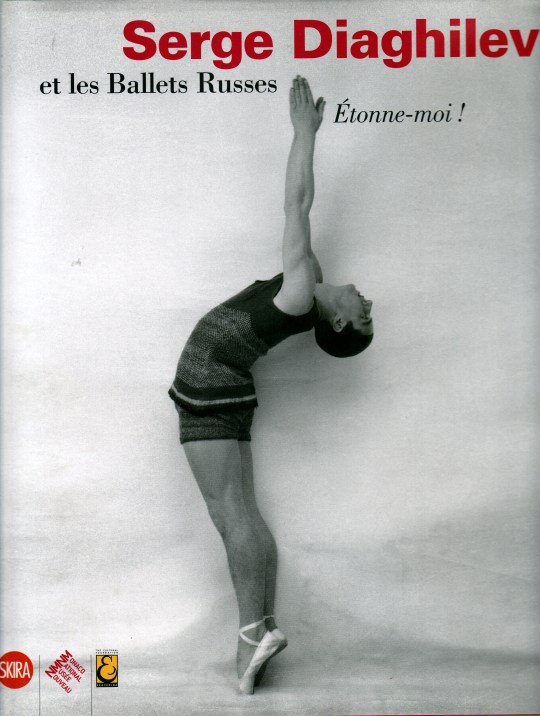





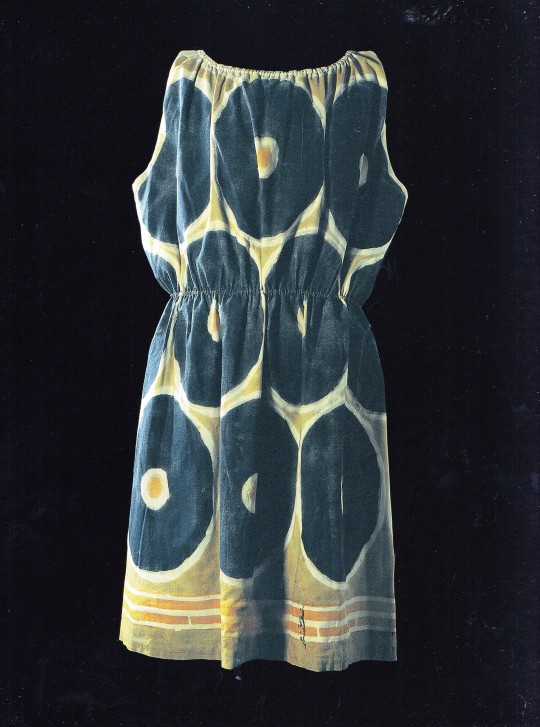




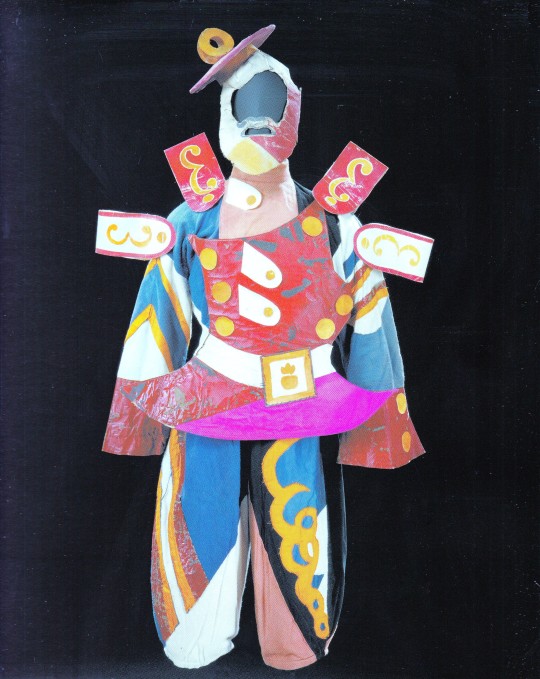
Étonne-moi! Serge Diaghilev et les Ballets Russes
sous la direction de John Bowlt, Zelfira Tregulova, Nathalie Rosticher Giordano,
Skira, Milano 2009, 339 pagine, 25 x 29 cm, 300 ill.colori, ISBN 9788857200910
euro 50,00
email if you want to buy [email protected]
Exposition Monaco, Moscou 2009
En mai 1909, Serge Diaghilev stupéfia le monde de la danse avec les premières représentations parisiennes de ses ballets, combinaison sans précédent de grâce et de vitalité, d’originalité et de raffinement technique. Monte-Carlo, qui fut pour Diaghilev un important centre d’activités pendant l’existence de la compagnie connue sous le nom de Ballets russes, célèbre ce centenaire par une grande exposition comptant plus de 300 oeuvres d’art ayant trait aux Saisons russes de 1909 à 1929. L’exposition s’accompagne d’un catalogue entièrement illustré auquel ont contribué les plus grands spécialistes de l’histoire du ballet et des arts visuels russes. Les productions légendaires du Pavillon d’Armide, de Cléopâtre, de Schéhérazade, du Sacre du printemps de Petrouchka, de Parade et de bien d’autres ballets revivent à travers des projets de décors, des costumes, des tableaux, des sculptures, des photographies, des éditions de luxe, des programmes et des objets de culture matérielle. Les oeuvres d’art proviennent d’une grande variété de collections publiques et privées, nationales et internationales, telle la collection Fokine du Musée du théâtre de Saint-Pétersbourg. Les créations scéniques de Diaghilev s’accompagnent d’un nombre important de tableaux, de dessins et d’autres objets contextuels qui ont caractérisé la renaissance culturelle russe dans les premières décennies du XXe siècle. L’exposition et son catalogue s’inscrivent dans une plus vaste série de manifestations ayant trait à l’activité de Diaghilev à Monte-Carlo et à Moscou, comprenant des spectacles de ballet, des films, des conférences et un colloque international.
30/05/23
orders to: [email protected]
twitter: fashionbooksmilano
instagram: fashionbooksmilano, designbooksmilano tumblr: fashionbooksmilano, designbooksmilano
#Serge Diaghilev#1909-1929#Ballets Russes#Monaco National Musée#art exhibition catalogue#Léon Bakst#Jean Cocteau#vaslav nijinsky#Nijinsky#fashion books#fashionbooksmilano
29 notes
·
View notes
Text
Léon Bakst
Since 1910, Leon Bakst has settled in Paris again. During these years, he earned real world fame for his theatrical scenery — voluminous, multi-layered and fabulous. He designed Diaghilev's ballets for his Parisian Russian seasons — "Cleopatra", "Scheherazade", "Carnival" and "Narcissus".

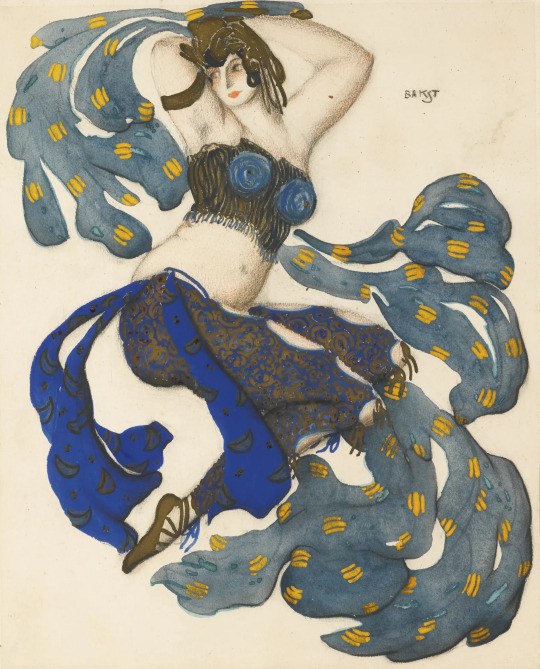
"Paris is truly drunk with Bakst"
0 notes
Photo
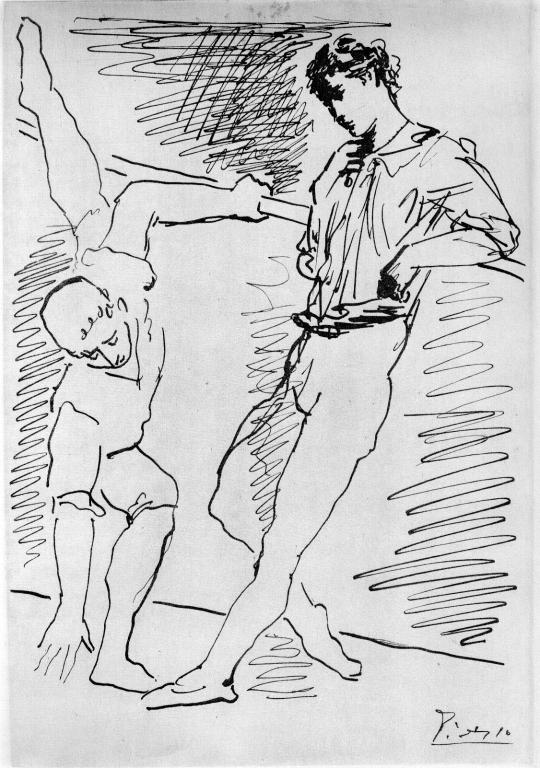
Pablo Picasso, Two Dancers, 1925
1K notes
·
View notes
Text

Léon Bakst
Prince Igor
L'oiseau de feu (1915)
28 notes
·
View notes
Text
BALLETS RUSSES MEME DUMP
but it's just my best ones i have more but im lazy rn



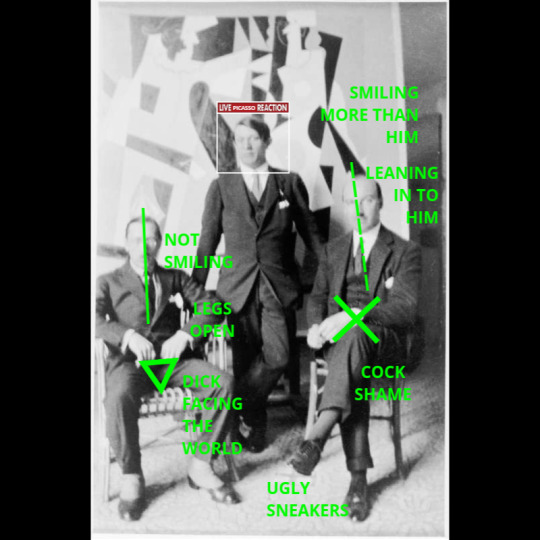

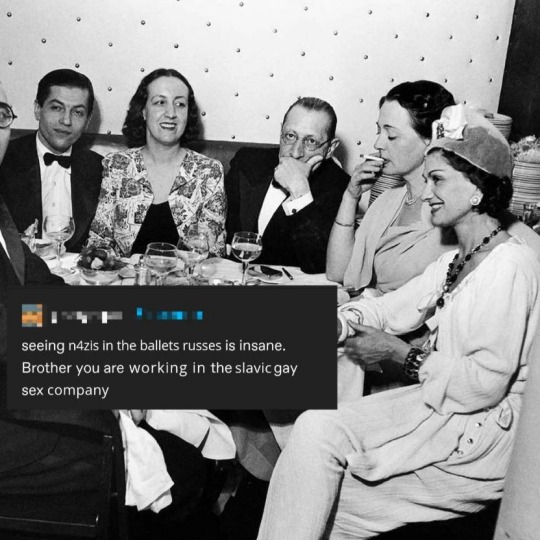


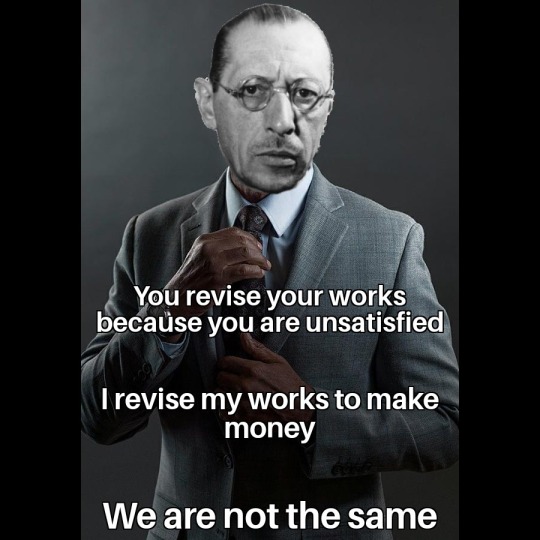

#im too happy rn to have unhinged ppl like me#which is why im posting rn#sergei diaghilev#ballets russes#vaslav nijinsky#léonide massine#serge lifar#igor stravinsky#freddie mercury#pablo picasso#sergei rachmaninoff#gay#lgbtq#coco chanel#jean cocteau#francis poulenc#ballet memes#classical music#fun fact i actually have firebird stuck in my head rn#shitpost
67 notes
·
View notes
Text

Serge Lifar and Félia Dubrovska in George Balanchine's production of Le Fils prodigue for Diaghilev's Ballets Russes, costumes by Rouault. From the July 1929 French Vogue.
(source: Gallica)
#ballets russes#diaghilev#serge lifar#félia dubrovska#ballet#1920s ballet#rouault#vintage fashion#george balanchine#le fils prodigue#the prodigal son#french vogue
23 notes
·
View notes
Text




Selected Works from Serge Sudeikin
Serge Sudeikin was a Russian artist and one of the foremost theatrical set designers, with work for the Ballets Russes and the Metropolitan Opera, amongst others. His work showed clear influences from his peers, including several folks from the Mir iskusstva movement. Sudeikin had several marriages and other romantic relationships with men and women throughout his life, including fellow member of the Silver Age of Russian culture, Mikhail Kuzmin. Their relationship was personal and artistic, as they inspired each other's work. His professional and personal life also intertwined with Serge Diaghilev, founder of the Ballets Russes. the impresario behind the Ballets Russes. It's fair to say Sudeikin's work contributed highly to the visual and cultural impact of the Ballets Russes on the international stage — though Diaghilev was certainly talented and complicated in his own right. Sudeikin's relationships extended into his marriages, first to Olga Glebova, a dancer and actress. Though initially passionate, this marriage ended, partly due to Sudeikin's complex personal life and artistic commitments — similar to his later marriage to Vera de Bosset. Sudeikin's life and work were a tapestry of artistic brilliance, personal passion, and complex relationships. Despite his impact on stage and the canvas, he is less remembered than some of his peers, but his work is certainly worth exploring. You can find these works and more in our gallery!
113 notes
·
View notes
Note
What's a ballet with real snazzy costume work, in your humble and/or professional opinion? c:
Oh, you’ve activated my trap card - asking about costume design and ballet and not expecting me to barf up the entirety of my PhD. I’ve also done work on the ballet blancs costumes (Giselle and La Sylphide specifically) but they are interesting on a theoretical level and not so much visually, so I’ll skip that.
So here are some personal favs of mine - the highlights, if you will. Caveat: long post, and mostly limited to the work of the Ballets Russes, because they are my longtime obsession and I think (and have argued) for their role in fundamentally changing stage and costume design (to say nothing of dance, and George Balanchine can sit the fuck down). I didn’t put that in my thesis but I wanted to.
Anyway tldr in the first decade of the 20th century a troupe of dancers from the Russian Imperial Ballet (later the Mariinsky) travelled through Europe under impresario Serge Diaghilev, for what became known as the Saisons Russes, or Russian Seasons. They performed both opera and ballet, and are probably best remembered today (if at all) as the troupe that danced the premier of Stravinsky’s Rite of Spring and caused a riot at the Theatre des Champs Elysées. The eminent artists that worked with them include Debussy, Cocteau, Picasso, Chanel - and these are only a few recognisable names. But my focus was primarily on the Russian roots of the ballet, in their visual language and presentation of gender and nationality, more precisely around the work of artist Leon Bakst and dancer Vaslav Nijinsky.

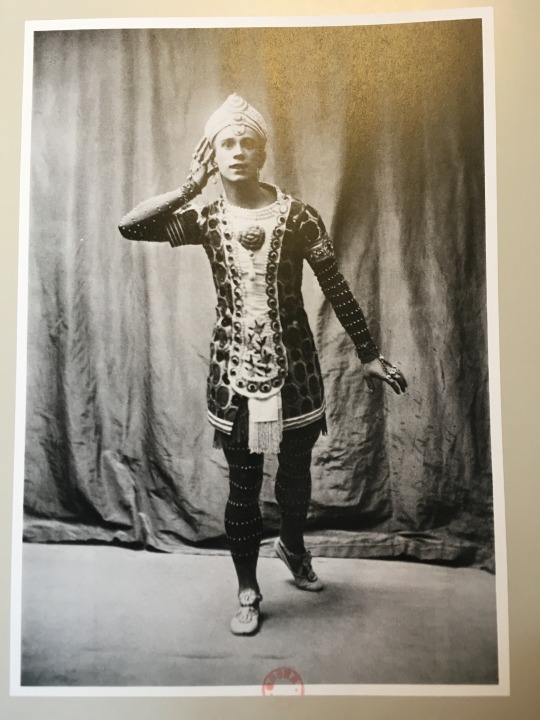
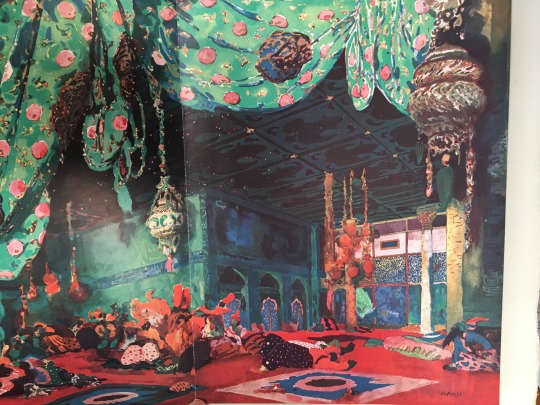
Second image of Nijinsky from Le Dieu Bleu, and Bakst’s set design from Scheherazade (1911). These are mainly photos and scans I have from the year I spent in the archives of the Palais Garnier (the Paris Opera) where all the good stuff is.
The crux of why these costumes are insanely interesting to me is because they are very specific to their time - they are a product of a resurgence in nationalist interests in Russian art (Diaghilev ran Mir Isskustva and worked with Savva Mamontov before he organised the BR) as well as a carefully crafted, highly artificial presentation of Otherness, expressly destined for export to the west. French audiences in the first decade of the 20th century (because there is a stark cut-off at the beginning of WW1) still had an appetite for Orientalism, despite their flagging colonial power. What the Russians brought them was compelling mix of performative Orientalism just vague enough to be appealing and fantastical, visually intriguing, and refreshing to a society that had otherwise come to recognise itself as decadent, fallen “victim” to modernity. In the athletic virtuosity of Russian bodies, Bakst’s exotic visual language and the soaring music of Rimsky-Korsakov and Stravinsky, the French devoured what they deemed a sort of noble savagery (yes, that kind). Despite the oversaturation of Orientalism in painting throughout the 19th century, the French identified a kind of masculine vigour and freedom in these live performances they found they themselves lacked, and longed for. Primitivism, as demonstrated in myriad ways by the BR, was for them a way to reconnect with a virility that they felt modernity had stolen, or at the very least, weakened. If you think this sounds eerily akin to the discourse around mounting desire for war to “cleanse” or “reset” Europe during that same period, you are right.
A few of Bakst’s lesser known designs from the archive, for context (including a reprod by Barbier which I don’t have the OG of but is saved in my Bakst folder so please take my word for it). I have a thousand more of these but tumblr has an image limit per post 😤
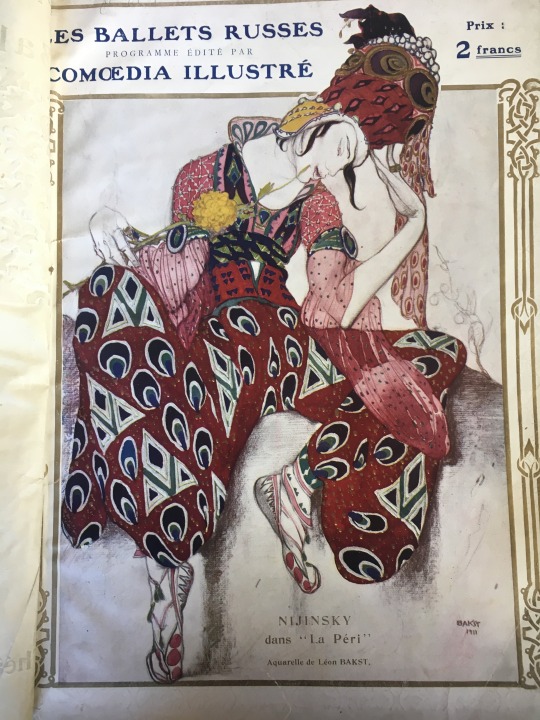
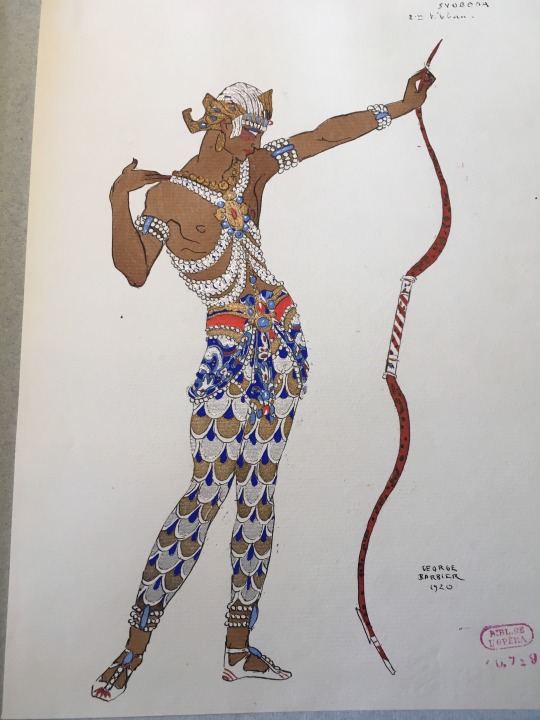

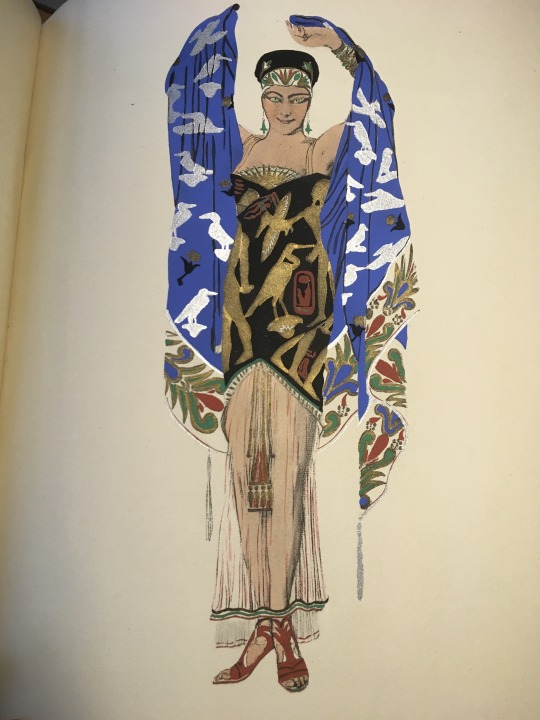
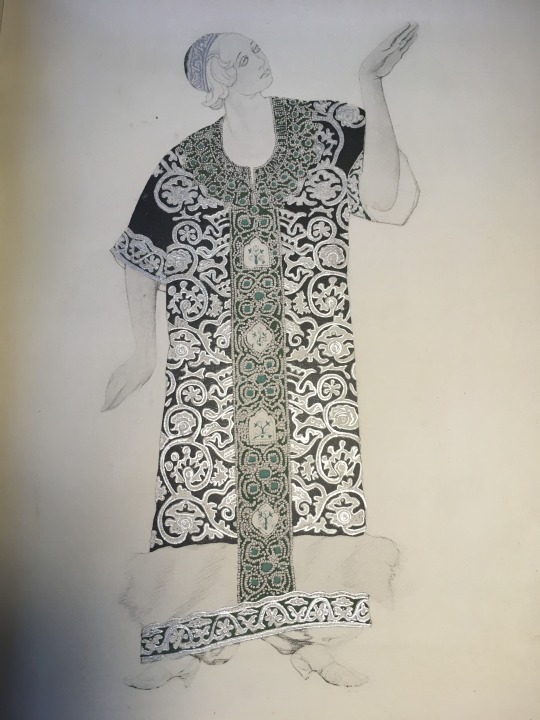
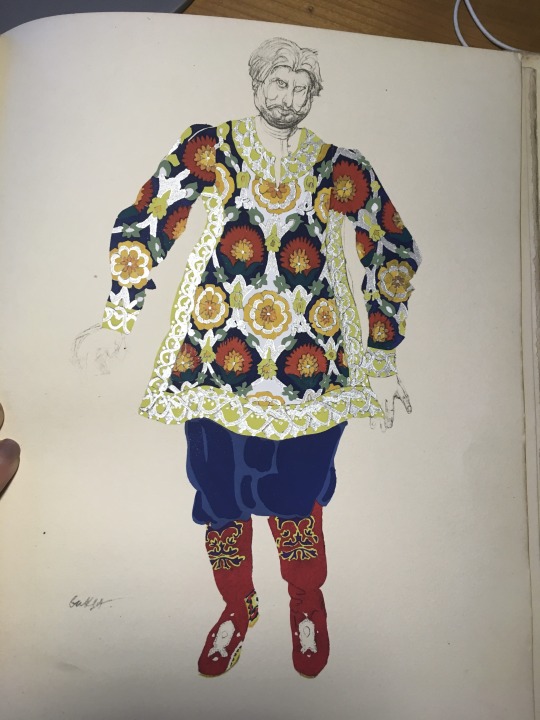
Tamara Karsavina, who often performed with Nijinsky, and one of my most beloved historical figures. The existence of a strong classical ballet cirruculumin the UK today is in part thanks to her.
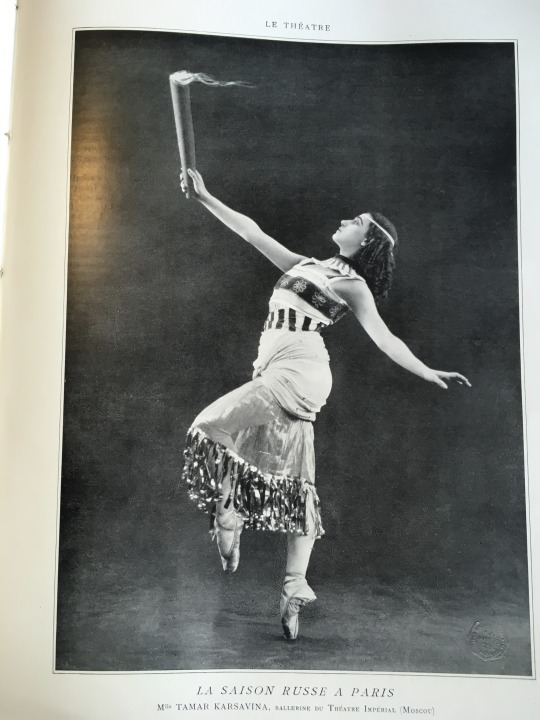
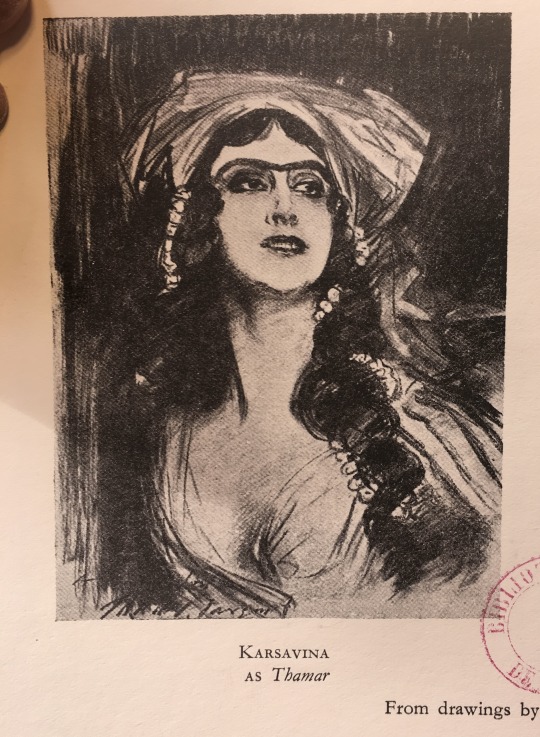
One of her most famous roles, as the Firebird:
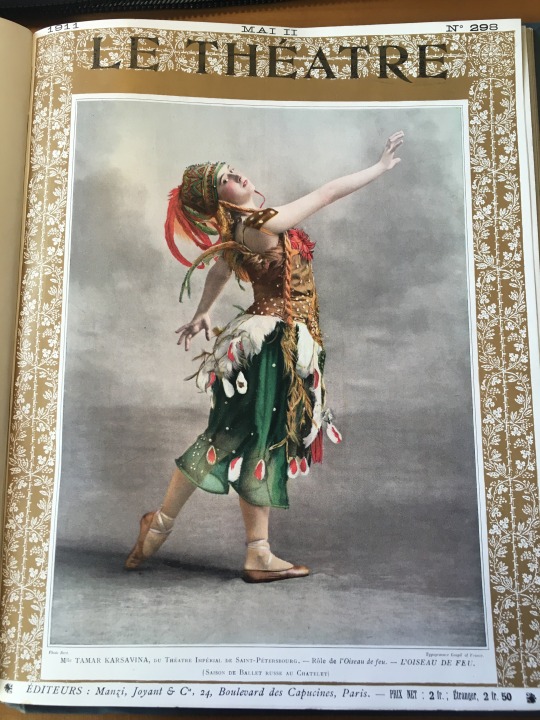
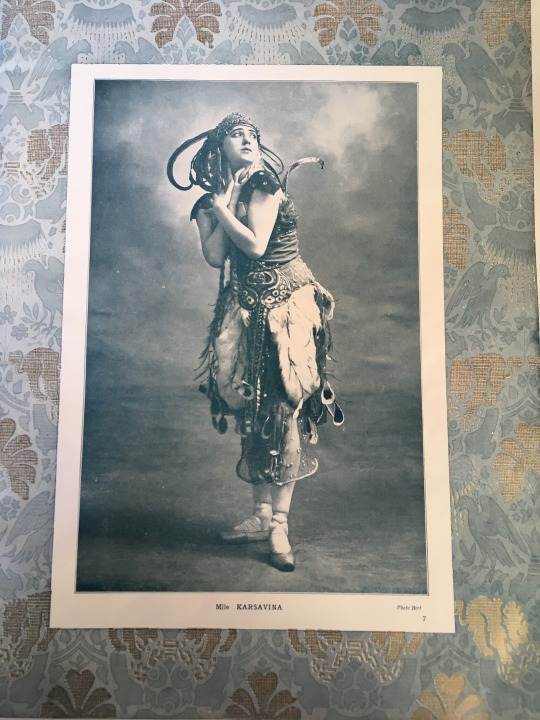
Nijinsky is by far the most interesting figure to come out of the BR. He combined virtuosity and strength (that most audiences identified as masculine) with a glittering, joyful, and expressive queerness on stage (and off). Some of his greatest roles are expressly feminine in their costume design: Le Spectre de La Rose, for example.
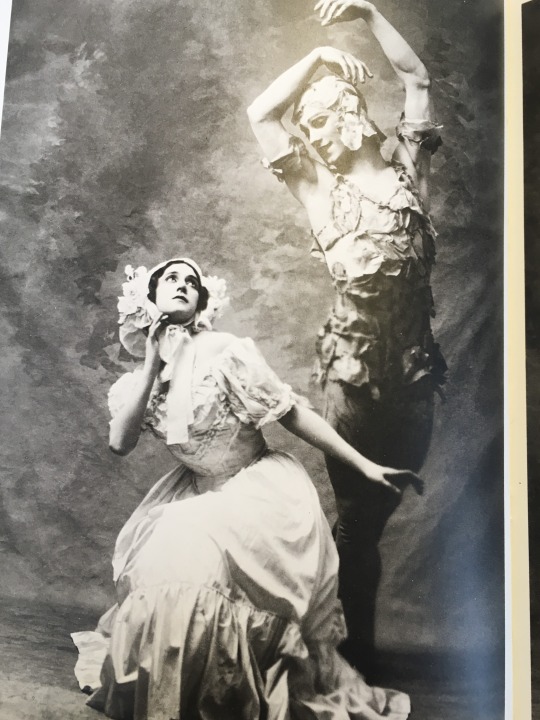
There’s a colorised version of this out there where you can see every pink rose petal on him.
While others are much more decorative but still markedly Orientalist (or Russian-Orientalist): Le Dieu Bleu, La Peri, Les Orientales, L’Oiseaux de Feu.
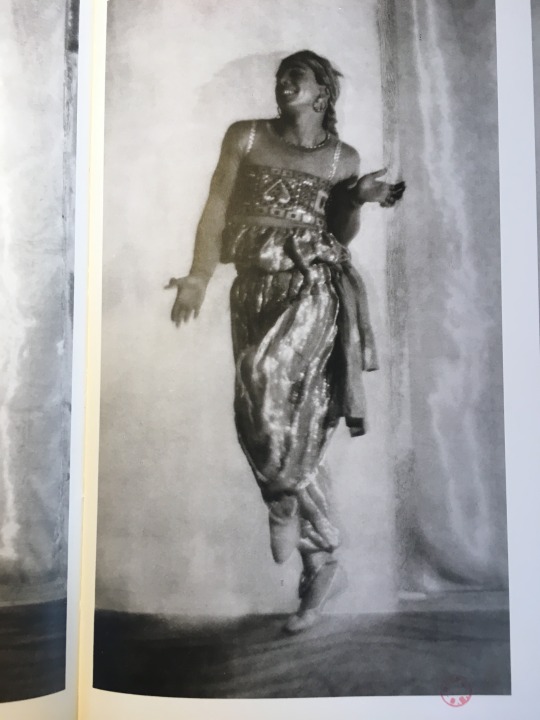
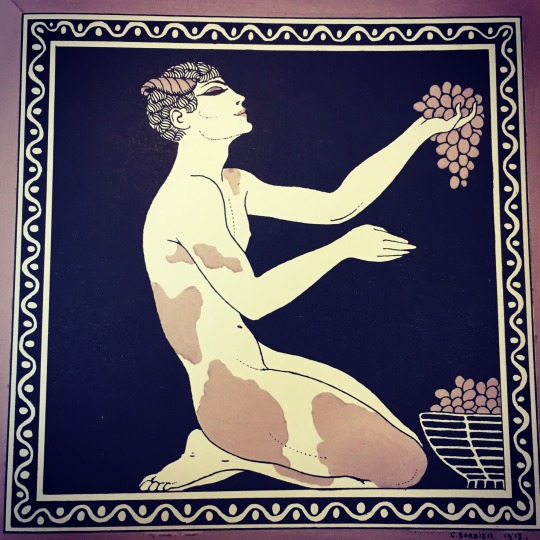

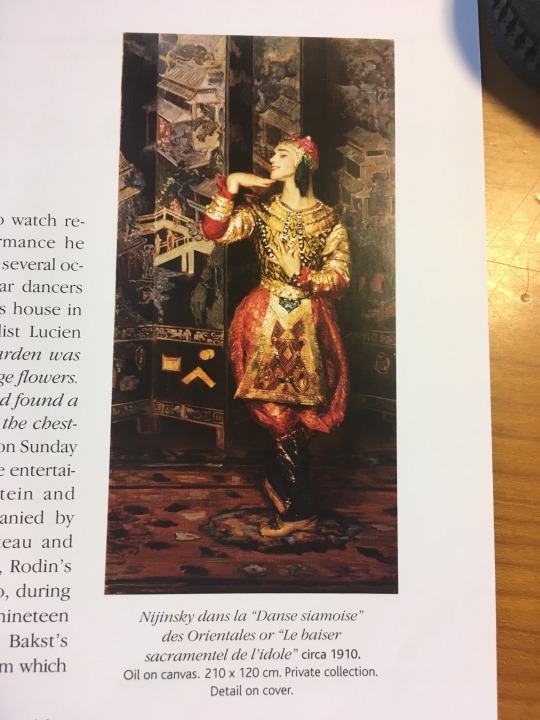
This last image above is not, the last I saw it, in a private collection. It hangs above the vestibule of the Palais Garnier archives (also Napoleon’s private hangout room) where it faces the sort of “diptych” version that features Karsavina, and on occasion I would stand below them and weep quietly).
Either way, there is an argument to be made about Nijinsky’s physicality and, more importantly nationality as a kind of avenue of permission through which the French could admire both his beauty and athleticism and even, to a degree, imagine themselves in his place while still maintaining that safe distance of Otherness.
But I would argue that his greatest role was the Golden Slave in Scheherazade, a wild, erotic orientalist fantasy that has little to nothing to do with the actual tale of Scheherazade. In it, Nijinsky - bejewelled, wild, ecstatic, (and yeah often in blackface) - cavorts with Zobeide, the Sultan’s favourite, in a very sexually explicit storyline. Both characters are equally decorative in their costumes, and both, in real life, were recognisably queer(ed) figures. It’s Scheherazade in particular that helped accelerate an obsessive trend in fashion (Paul Poiret was at the centre) for Orientalist design. Bakst himself did some silhouettes that are hard to distinguish from his costume design, and through the remarkable illustrations by Paul Iribe, Georges Lepape and Georges Barbier, we can see some of the blatant repetition of motif and silhouette in these ensembles that are designed, among other things, to be worn to the theatre.
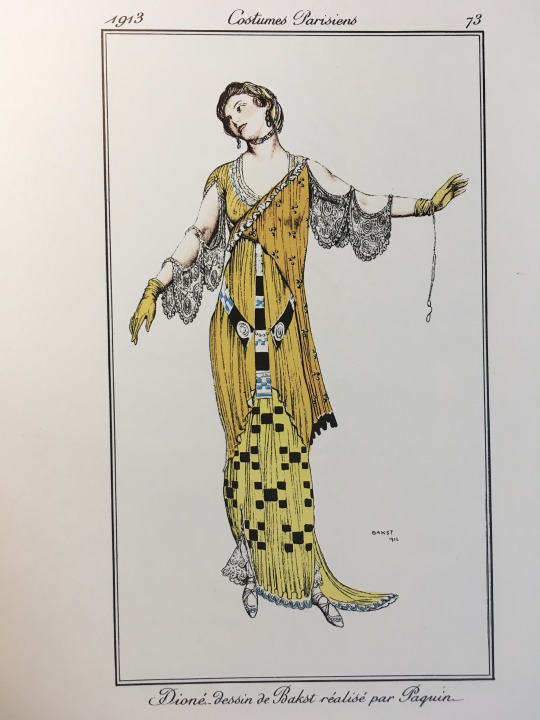
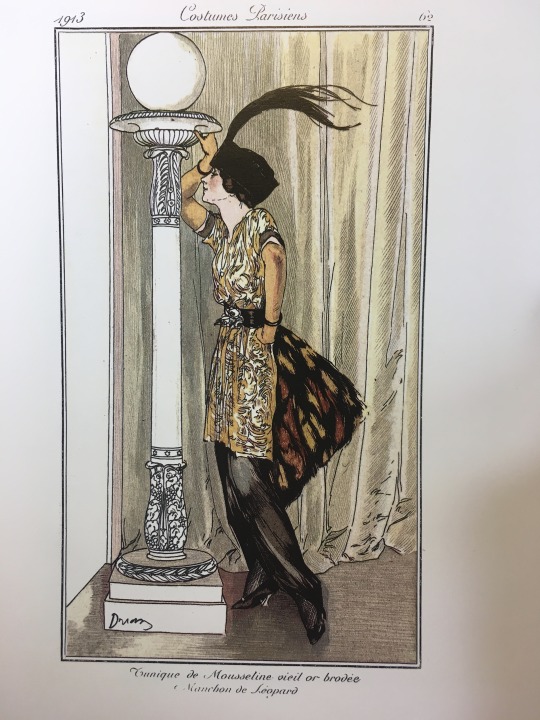
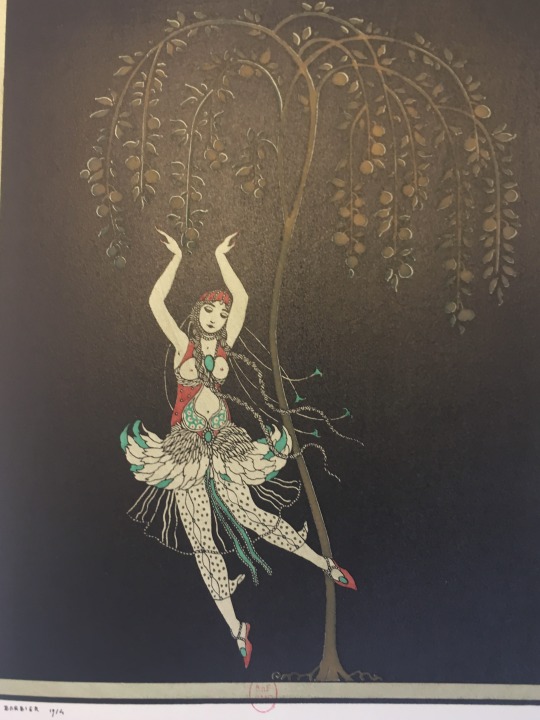
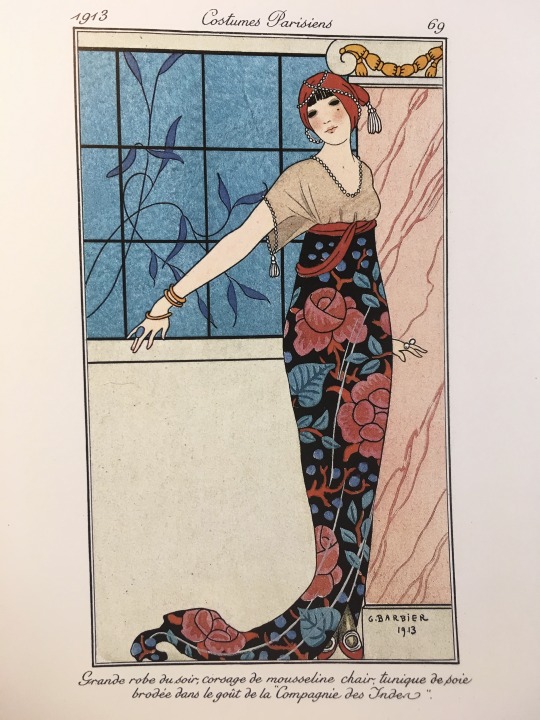
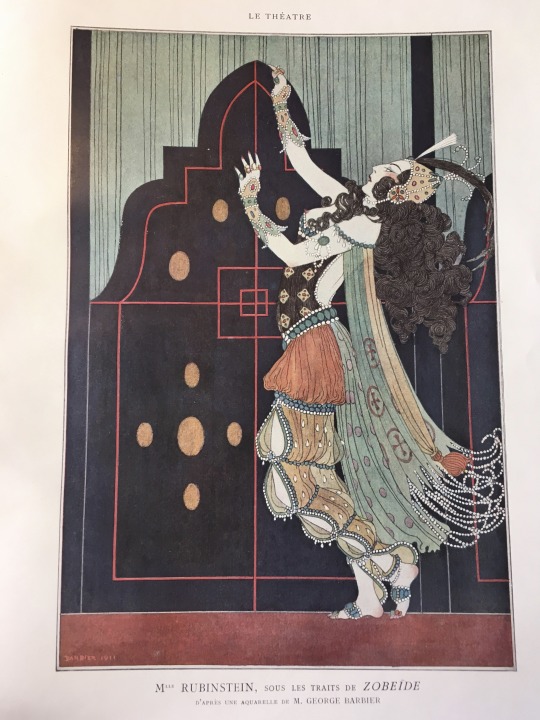
3rd and 5th are depictions of costumes of the Firebird and Zobeide respectively; the rest are fashion plates. This doesn’t even include the lampshade dress - which I don’t have a handy picture of, but have seen in real life - that is a pretty blatant melange of the Firebird and Zobeide, as designed by Poiret. Below is one of my favourite examples: A woman in a lampshade-style dress, standing against a backdrop not unlike Bakst’s set design above, attended by a archetypal oriental servant wearing Nijinsky’s Golden Slave costume.
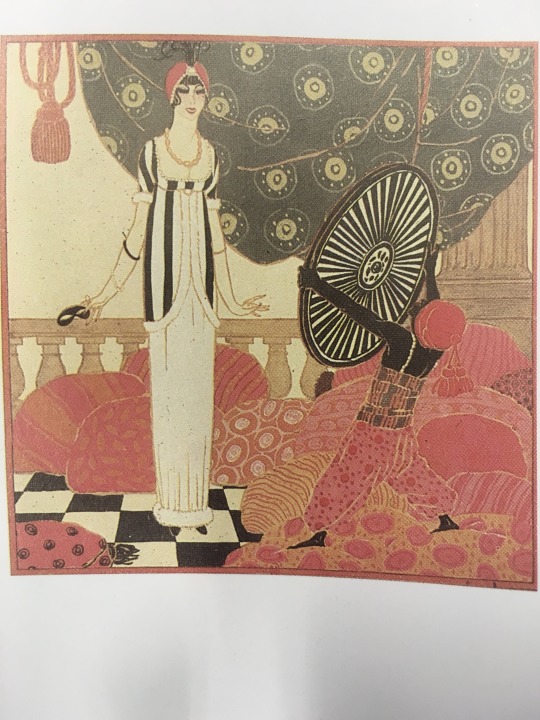
These motifs also proliferated in advertisements and in all kinds of other consumer products (perfumes, for example, and decorative objects). Thus, there’s a performative aim in wearing these designs that I read as a sort of pseudo-kinetic empathy (and can funnnily enough probably be compared to cosplay). There is an attempt here to channel what is being presented onstage, to reenact it, to physically embody it, in the way that fashion is, at its core, a tool through which to construct identity. That the French pulled inspiration from an openly queer man leaping across the stage dripping in jewels, and from femme fatal-style odalisques, says a lot about the visual and cultural impact the BR had on the theatre-going public at the time.
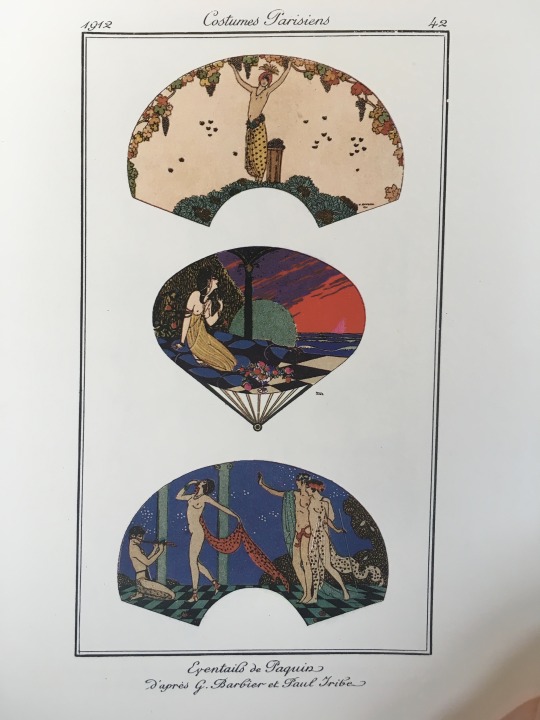
You can see in these fan designs by Paquin some pretty obvious references to the BR aesthetic: L’apres-midi d’un faune, Daphnis et Chloe, Scheherazade, even a little Le Pavillon d’Armide in that first one.
Nijinsky was not the only one to queer the stage: despite not being a dancer trained to the level of the BR troupe, Ida Rubinstein, no doubt purposefully channelling Sarah Bernhardt, was also a beloved stage presence, whether as the sly harem favourite Zobeide or as the strikingly androgynous St Sebastian, gayest of saints.
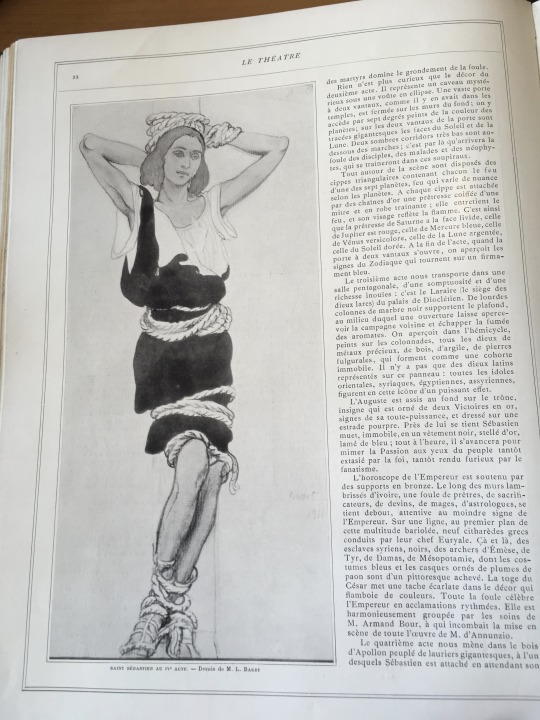

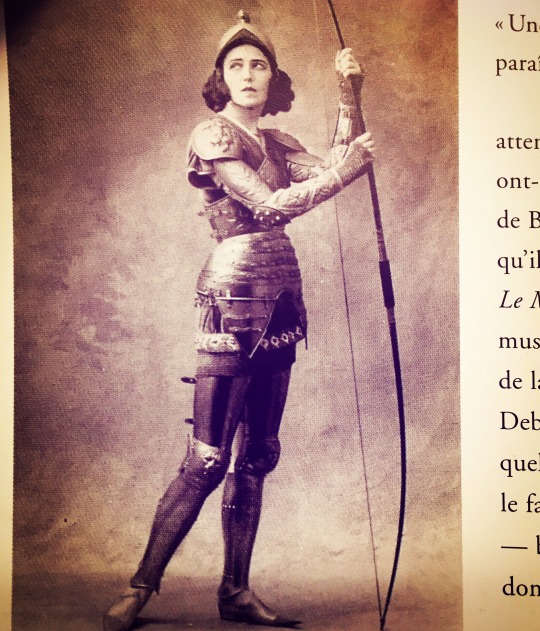
This is not to say there haven’t been wonderful and brilliant costume designs since - and quite a few known fashion designers working alongside dance companies, to great success or otherwise. I will, however, shoutout my favourite contemporary work: Akram Khan’s Giselle, which has everything and yet nothing to do with Adolph Adam’s 1842 piece. I don’t even want to post pictures because the costumes of the nobles (the landowners, in this very apocalyptically late-stage capitalist version) are so fucking breathtaking in relation to the overall design, and their entrance itself is probably one of the most spectacular parts of the ballet, that all I can say is just see it. Or buy the dvd. What Khan does gesturally is beyond words, what Vincenzo Lamagna does with Adam’s original score is visceral and haunting and churns my insides. I make a point to see it live at least once a season when it’s touring with the ENB, and I will do so until it leaves the repertory or until I die. It’s my contemporary Scheherazade. It’s a gesamtkunstwerk.
Tldr Leon Bakst is one of the greatest costume designers of the 19th and 20th century and criminally underrated.
It’s not ballet, and it’s not the sumptuous costumes from Boris Godunov, but as a bonus here’s my favourite image of opera star Fedor Chaliapine as Ivan the Terrible.
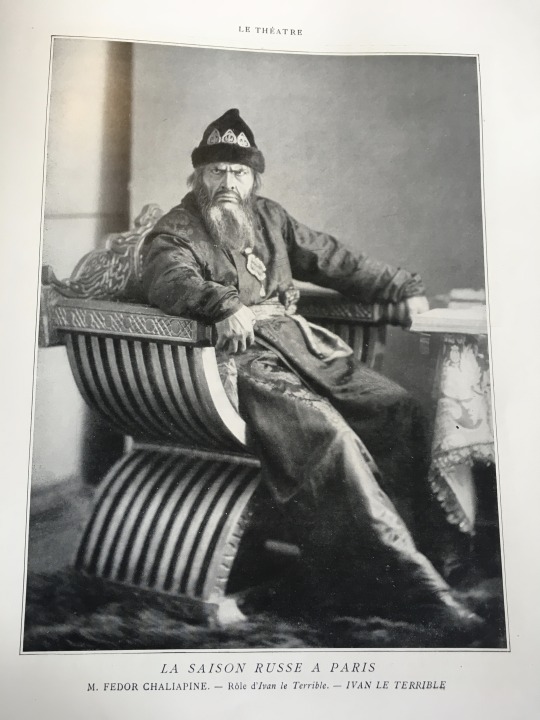
#Thank you for the enclosure enrichment#And for coming to the tldr of my thesis#ballets russes#vaslav nijinsky#Leon bakst#fashion design#academic indulgence hour#Art history
58 notes
·
View notes
Text
I believe the first ballet to A Midsummer Night’s Dream was Marius Petipa’s version for the Maryinsky Ballet in St. Petersburg in 1876. It was this that Michel Fokine in 1906 adapted and amended for students of the Imperial School. The cast included Vaslav Nijinsky, and it proved one of the very early works of Fokine to capture the attention of the impresario Serge Diaghilev. Fokine later reworked the score into Les Elfes for his own company at the Metropolitan Opera House in 1924. In 1933 Col. W. de Basil’s Ballets Russes de Monte Carlo staged David Lichine’s first ballet, Nocturne, using not Mendelssohn but Rameau music, with Alexandra Danilova as Titania, Léonide Massine as Oberon, and Lichine himself as Puck.
But the four most interesting versions for me are George Balanchine’s for New York City Ballet in 1962, Frederick Ashton’s for Britain’s Royal Ballet in 1964, John Neumeier’s for the Hamburg Ballet in 1977, and Christopher Wheeldon’s for the Colorado Ballet in 2000. All, except for the Ashton, are full-evening ballets. Wheeldon’s version not unexpectedly owes something to both Ashton and Balanchine. Neumeier’s version—which is by far the most adventurous and original and incorporates modern music by György Ligeti—has also been staged by the Paris Opera Ballet and the Royal Danish Ballet.
#shakespeare#william shakespeare#dance#ballet#shakespeare and dance#balanchine#midsummer#a midsummer night's dream
11 notes
·
View notes
Text
The Morgan Library & Museum
Crafting the Ballets Russes
The Robert Owen Lehman Collection

Crafting the Ballets Russes: The Robert Owen Lehman Collection
June 28 through September 22, 2024
Robert Owen Lehman’s extraordinary collection of music manuscripts has been an inspiration to scholars and visitors since it was placed on deposit at the Morgan Library & Museum. Among its many splendid works are deep holdings of early-twentieth-century ballet, including Igor Stravinsky’s Firebird (1910), Petrouchka (1911), and Les Noces (1923); Claude Debussy’s L’après-midi d’un Faune (1912); and Maurice Ravel’s Bolero (1928) and La Valse (1920).
The exhibition opens with the dramatic arrival of Serge Diaghilev’s Ballets Russes troupe in Paris in 1909 and goes on to trace its impact across the arts, highlighting the rise of women in leading creative roles. They include Bronislava Nijinska, who in 1921 became the Ballets Russes’ only female choreographer and whose groundbreaking choreography defined Les Noces, Bolero, and other ballets of the era; and Ida Rubinstein, whose riveting stage presence helped establish the Ballets Russes in its first seasons and who came to rival Diaghilev as a patron of music, commissioning Bolero in 1928.
At the core of the exhibition is the creative process that brought these ballets to life. The exhibition and accompanying catalogue address the sketches, drafts, and working copies of the composers, choreographers, and designers, capturing the ways in which they imagined, conceived, and collaborated to kindle works of astonishing originality and ongoing influence.
The exhibition is organized by Robinson McClellan, Assistant Curator of Music Manuscripts and Printed Music.
Crafting the Ballets Russes: The Robert Owen Lehman Collection is supported by the William Randolph Hearst Fund for Scholarly Research and Exhibitions, the Robert Lehman Foundation, Mr. and Mrs. Clement C. Moore II, the Lucy Ricciardi Family Exhibition Fund, Elizabeth and Jean-Marie Eveillard, Cynthia Hazen Polsky and Leon Polsky, and the Franklin Jasper Walls Lecture Fund. Assistance is provided by the Gladys Krieble Delmas Foundation and Hubert and Mireille Goldschmidt.
(L) Igor Stravinsky (1882–1971), Firebird, autograph manuscript, piano, extensive revisions, [1910]. The Morgan Library & Museum, New York, Robert Owen Lehman Collection, on deposit. Used by kind permission of European American Music Distributors Company, sole U.S. and Canadian agent for Schott Music GmbH & Co. KG, Mainz, Germany, publisher and copyright owner.
(R) Léon Bakst (1866–1924), “Firebird and the Prince (Tsarevitch),” poster design for Firebird, 1915. Harvard Theatre Collection, Houghton Library, Howard D. Rothschild Collection.



#. The Morgan Library & Museum, New York #art #original art #xpuigc
9 notes
·
View notes
Text

Posed photograph of Serge Lifar and Alexandra Danilova in Swan Lake, revived by Serge Diaghilev's Ballets Russes, 1926. This photograph was taken to promote the revival of The Swan Lake at the first night of the 'popular' season at the Lyceum Theatre, London, given by the Ballets Russes in November, December 1926. Swan Lake, described as a 'choreographic poem in 1 act' was the lake-side scene usually act II of the full ballet. The Morning Post had some reservations about the performances as the dancers had been ' experimenting too much in modernity to maintain the rigid accuracy and perfect technique indispensible in dancing of this kind' but did add Danilova 'was good and looked lovely'. Thechoreography was credited to Marius Petipa, music was by Piotr Tchaikovsky and the set and costumes were credited to Constanin Korovine.
#alexandra danilova#serge lifar#balletphotography#ballerina#striped tights#ballet slippers#vintage ballet#ballet history#ballet russes#swanlake#swan lake
32 notes
·
View notes
Text














Set and costume designs for ballet and theater
The Thyssen-Bornemisza Collection
Alexander Schouvaloff, introduction Serge Lifar
General editor Simon De Pury
The Vendome Press, New York 1987, 268 pages, 24,5x30cm, ISBN 0-865-076-4
euro 80,00
email if you want to buy [email protected]
During his lifetime the late Baron Thyssen-Bornemisza acquired a collection of over fifty drawings - largely of set and costume designs - reflecting the theatre of the first half of the twentieth century, and particularly the ballet, during what was surely its most exciting and innovative period. Twenty-two of these drawings are by Leon Bakst, perhaps the most famous of all theatrical designers, whose revolutionary designs for Diaghilev's Ballet Russes played such a major part in the impact that company made during the years 1909-1929.
16/11/24
#Set and costume designs#Thyssen-Bornemisza Collection#Alexander Schouvaloff#Leon Bakst#ballet russes#Diaghilev#Barbier#Bakst#Erté#Exter#Goncharova#Manuel#De Zamora#1909-1929#fashionbooksmilano
47 notes
·
View notes
Text
















Set and costume designs
The Thyssen-Bornemisza collection
Alexander Schouvaloff, Intr. Serge Lifar
P.Wilson, London 1987, 268 pages, 25x30cm, ISBN 085 667 3153 , copy n.4770
euro 60,00
email if you want to buy [email protected]
During his lifetime the late Baron Thyssen-Bornemisza acquired a collection of over fifty drawings - largely of set and costume designs - reflecting the theatre of the first half of the twentieth century, and particularly the ballet, during what was surely its most exciting and innovative period. Twenty-two of these drawings are by Leon Bakst, perhaps the most famous of all theatrical designers, whose revolutionary designs for Diaghilev's Ballet Russes played such a major part in the impact that company made during the years 1909-1929.
In addition to works by Bakst, the collection includes drawings by George Barbier, Alexandre Benois, Erte, Alexandra Exter, Nathalie Gontcharova, Michel Larionov, Jose de Zamora and others.
30/09/29
#set&costumedesigns#Bakst#Erté#Barbier#Gontcharova#Larionov#Benois#theatrical costumes#fashion books#fashionbooksmilano
3 notes
·
View notes
Photo




Serge Lifar in Apollon Musagète, choreographed by Balanchine in 1928 to music by Stravinsky, and with costumes by Coco Chanel, for Diaghilev's Ballets Russes
344 notes
·
View notes
Text
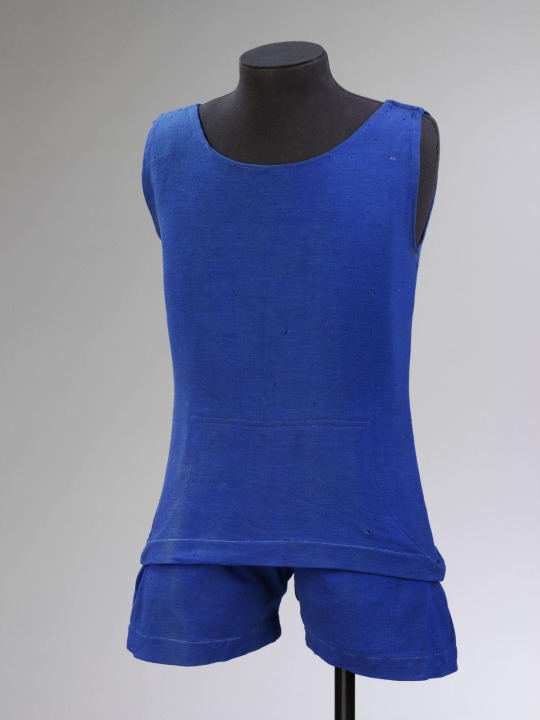
Blue Wool Bathing Suit, 1924, French.
Designed by Coco Chanel.
Worn as a ballet costume in Le Train Bleu.
Victoria and Albert Museum.
#theatre costume#swimsuit#swimwear#menswear#1924#1920s#1920s costume#costume#coco chanel#chanel#V&A#1920s France#French#ballet#ballet costume
11 notes
·
View notes